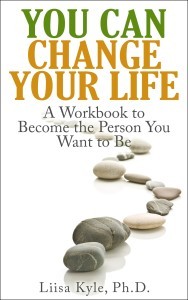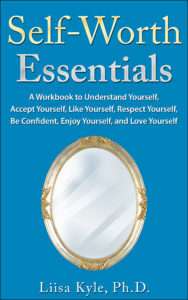Liisa Kyle's Blog, page 9
October 3, 2018
Focus!

image via commons.wikimedia.org
Are you feeling frazzled? Stressed out? Overwhelmed? You’re probably trying to do too much.
If you want to do more, do less.
It doesn’t matter how massive or complicated your creative project is. At a given instant, you can only focus on one aspect of it.
It doesn’t matter how many projects, activities and ideas you are juggling. At a given instant, you can only do one thing.
“Oh no, not me,” you may insist. “I’m a multi-tasker. Right now, while I’m reading this, I’m also composing a song, thinking about a terrific new product line and texting my mom.”
No, you’re not. You may be toggling among those different activities every second…but at a given instant you are doing only one of them. And by toggling so quickly among them, you’re not doing any of them particularly well.
Frankly, you’re being unnecessarily hard on yourself. It’s much easier to focus on one thing at a time. And here’s the good news: when you stop trying to do everything at the same instant — when you focus on just one activity at a time, you will get more done, more easily, with less stress.
Let me repeat that — on the off chance you’re, say, Skyping a client, weaving a tapestry and watching a DVD while you’re reading this.
Benefits of Focusing on One Thing at a Time
1. It’s easy.
2. You’ll get more done.
3. You’ll get things done more easily.
4. You’ll reduce stress.
5. You’ll feel better.
6. You’ll be more pleasant to be around.
How to Focus
1. Identify and remove distractions.
What interrupts your focus? Be candid. Is it email? The phone? Internet surfing? The piles of half done projects piled around you? Your ‘to do’ list(s)? Twitter? Facebook? Flipboard or Zite or Angry Birds or any of the other 10,000 apps on your iPad? Other people?
Take a moment to write down what tends to interfere with you sticking to one thing at time. Now, brainstorm ways to remove or reduce those temptations. Schedule time at the end of your workday to do those things that need to be done (e.g. check your email, return phone calls, etc.)
2. Pick something to do.
What’s your top priority right now?
3. Set a timer for 50 minutes.
Devote the next 50 minutes to doing only your top priority. If something else comes us — let’s say you get a great idea, make note of it quickly, then get right back to the task at hand.
4. Give yourself a break.
Take five or ten minutes to do whatever you need to do — rest, eat, jump up and down, stretch, feed your pet, stuff a load of laundry in the washer, read, listen to a great song — whatever.
5. Reset your timer.
Focus on your top priority for another fifty minutes. This might be the same task you were working on in the previous focus session — or it might be a new priority. You choose what makes sense for you do work on for this next fifty minutes.
6. Take a break.
7. Repeat.
Try this “Focus” approach this week and see how it works for you.
***
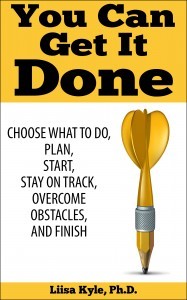 Check out my book YOU CAN GET IT DONE: Choose What to do, Plan, Start, Stay on Track, Overcome Obstacles, and Finish
Check out my book YOU CAN GET IT DONE: Choose What to do, Plan, Start, Stay on Track, Overcome Obstacles, and Finish
Available here in paperback and e-book format: http://bit.ly/YouCanGetItDone
***
Want to re-publish this article? Go for it – just include the author’s name, a link to this original post and the following text blurb:
Are you struggling with too many talents, skills, ideas? You may have The DaVinci Dilemma ! Find tools, fun quizzes, coaching, inspiration and solutions for multi-talented people at http://www.davincidilemma.com/ .
! Find tools, fun quizzes, coaching, inspiration and solutions for multi-talented people at http://www.davincidilemma.com/ .

September 3, 2018
How to Boost Your Energy: A Mini-Workshop

image via commons.wikimedia.org
Creative, multi-talented people have a lot going on so it’s important to keep our energy up. It’s difficult to be creative or productive or happy when you’re drained or fatigued. The first step to boosting your energy is to understand what raises your energy level and what depletes it.
Recognize YOUR Unique Energy Boosters
Different people get energy from different things. If you’re an introvert, for example, you probably find being around a lot of people draining. You need some alone time to revive after social interactions. If you’re an extrovert, in contrast, you probably get energy from socializing. When your energy is low, you’d do well to call or visit a fun friend to get your creative juices pumping.
1. Take a moment to ask yourself: what gives YOU energy?
____________________________________________________
____________________________________________________
____________________________________________________
____________________________________________________
Use this list of your unique energy boosters to know what to do when you’re feeling fatigued. Schedule them regularly to keep your energy levels high.
2. What drains you?
____________________________________________________
____________________________________________________
____________________________________________________
____________________________________________________
These are the things to reduce in your life. When you know you have to do one of them, balance it with some energy boosters from your first list.
3. Who gives you energy?
____________________________________________________
____________________________________________________
____________________________________________________
____________________________________________________
These are the people to see regularly and to turn to, in particular, when you’re having a low energy day. Add them to your list of your unique energy boosters.
4. Who drains you?
____________________________________________________
____________________________________________________
____________________________________________________
____________________________________________________
These are the people with whom to minimize contact, to the extent possible. When you have to interact with them, replenish your energy with items from your list of your unique energy boosters.
5. Review the following ideas. Add to your ‘energy booster’ list any items that work for you:
SHORT TERM ENERGY FIXES
If your energy level is generally pretty good, but you’re having one of ‘those days’ when you find yourself fatigued or dragging, try one (or more) of these energy boosters:
*walk around the block
The combination of sunlight, fresh air and exercise can work wonders.
* have a nap
A brief lie-down can give your body and brain a chance to recharge.
* do something you love
It’s hard to be tired when you’re happy.
* do something new
Try a new food or place or activity.
* stretch, stand up and/or move your body
Especially if you’re in a situation in which you are sitting for long periods of time. Research has shown that too much sitting can kill you. Luckily, it’s easy to remedy. When you’re sitting for long periods of time, make a point of getting up, at least once an hour, and moving around for at least one minute.
LONG TERM ENERGY BOOSTERS
To boost your energy over the long-term you need to take good care of yourself.
1. Aim for seven hours of sleep a night.
Studies have shown that this is, on average, the optimal amount of sleep for humans.
2. Participate in regular, moderate physical activity.
Find a fun way to move your carcass — and do it regularly. Seek something that you see as ‘a treat’ rather than as ‘exercise’.
3. Eat healthily.
Eating more fresh fruits and vegetables and more whole grains will give you more energy than consuming fatty, processed products.
4. Drink more water.
Our bodies are mostly water and we need water to function. According to the BBC, “most advocates agree that 6–7 glasses of water (approximately 2 liters) daily is the minimum to maintain proper hydration.” By drinking enough water, you’re helping your body increase your energy level.
5. Drink less alcohol.
To the extent that you imbibe regularly, you’re probably drowsier. Drink less to boost your energy.
6. Meditate regularly.
People who meditate are less stressed, happier, healthier and more energetic.
7. Express your creativity.
Enjoy your talents! The more you create, the more energy you’ll generate.
8. Keep your creative well filled.
Listen to music. Read. Take yourself to an art gallery or a cool boutique or a great film. Try new things. Take a fun class.
9. Spend time in nature regularly.
We are biological beings who have been hijacked by the trappings of modern life. Especially if you live in an urban environment, find ways to spend time in more natural environments — forests or farmland or waterfront, for example.
10. Unplug.
Take regular Information Vacations: rather than being at the mercy of your phone and computer 24/7, make a regular point of turning them off.
*****
Check out my workbook: YOU CAN CHANGE YOUR LIFE: A Workbook to Become the Person You Want to Be. Available here: http://bit.ly/ChangeYourLifeWorkbook
*****
Want to re-publish this article? Go for it – just include the author’s name, a link to this original post and the following text blurb:
Are you struggling with too many talents, skills, ideas? You may have The DaVinci Dilemma ! Find tools, fun quizzes, coaching, inspiration and solutions for multi-talented people at http://www.davincidilemma.com/ .
! Find tools, fun quizzes, coaching, inspiration and solutions for multi-talented people at http://www.davincidilemma.com/ .

August 3, 2018
10 Creativity Lessons from my Roomba

image via commons.wikimedia.org
It was an impulse purchase…and a shining example of why I don’t go into big box stores like Costco. Whenever I do, I walk out with a mega-cart brimming with items I didn’t intend to buy. On this occasion, I got about 20 feet inside the front door when lo, verily, it arose before me…[insert angel choir here]…a tower of Roombas. Box after box of those robot vacuum cleaners that look like they belong in Star Wars.
Without breaking stride, I scooped up one up and headed directly to the cash, rationalizing as I went. Hey, I enjoy living in a clean and tidy house….even better when I don’t have to do the cleaning. This was a logical, labor-free way to maintain my floors…and to keep the dog dander at bay.
As it turns out, I’ve been pleased with my purchase. This appliance makes floor maintenance an easy, daily practice. It entertains my dogs as it does so. What I didn’t expect was this appliance demonstrates numerous lessons about the creative process. For example:
1. Start when you’ve got plenty of energy.
Before Roomba can work, its batteries need to be charged. Same goes for any smart, creative person. You do yourself a disservice whenever you begin a creative project or activity when you’re fatigued. Those first few hours of the morning when you are fresh and well-rested are best invested in whatever is most important to you.
2. Start before you have everything figured out.
You can plunk Roomba anywhere and push the ‘start’ button. It doesn’t know the size or shape of the room to be vacuumed but it begins anyway. It doesn’t hesitate or procrastinate or bury itself in research — it just starts working. You can too. It doesn’t matter where you start the creative process, so long as you do start.
3. Figure things out, as you go.
As Roomba cleans, it maps the room, keeping track of where it’s been and where it hasn’t. You can too. Map your creative project as you go. Keep track of what’s working well and what isn’t. Every day, identify the next few steps you can take. You don’t have to figure out every detail beforehand — it’s much easier to figure things out as you proceed.
4. Enthusiasm helps.
When Roomba starts to vacuum, it trumpets a happy song that, to me, sounds like “I’m here to clean!” This is preferable to the human equivalent in a similar situation which is apt to be a groan like “Oh, God! I have to clean. Again!” Which sounds better to you? Which is going to have the better impact on your creativity? Which is more motivating to the creative process? Strive to begin every session of your creative work with enthusiasm.
5. Focus!
Roomba does one thing at a time. It vacuums. It doesn’t clean while talking on the phone while checking its email while doing the laundry while composing an opera. You will get more done and do it better, with less stress if you avoid distractions and focus on doing only one thing at a time.
6. Ask for help when you need it.
When Roomba gets stuck in a corner, it literally asks for assistance. It emits a sad tone and a very clear message like “Please clean brushes” or “Move Roomba to a new location.” You can do the same with your creative projects. When you encounter obstacles to your creative process, enlist the help of relevant others.
7. Keep your batteries charged.
When Roomba’s batteries are depleted, it emits some ominous tones and the request, “Please charge Roomba”.
When you’re feeling your energy dip significantly, it’s important to your creativity to rest and recharge. An over-fatigued person doesn’t create much. Take good care of your body, mind, and spirit. Ideally, spend time in nature every week.
Equally vital to the creative process: you must seek creative input on a regular basis. It’s vital to your creative expression.
8. Dump your garbage. Regularly.
Roomba collects debris in a small garbage container that needs to be emptied after every use. If only we did the same. The sooner you jettison whatever garbage you’re carrying — like regrets, disappointments and perceived ‘mistakes’ — the better your creative work will be.
9. Keep going.
Assuming it has sufficient charge, Roomba keeps operating until it’s finished cleaning a room. This kind of persistence is critical to the creative process, especially on long-term projects. Especially for multi-talented people who have no shortage of things to do. The greatest challenge for us DaVincis is to keep going until a project is complete — especially that last five or ten percent. If this is a challenge for you, here’s an article for you.
10. Celebrate your success.
When Roomba completes cleaning a room, it emits a joyous tune that, to me, sounds like “And now that I am done here, I will sing my song!” To keep your creative juices flowing, its important to honor key milestones and accomplishments. If you don’t pat yourself on the back for your good work, its unreasonable to expect anyone else will do so.
***
 For more tips and techniques, check out my book YOU CAN GET IT DONE: Choose What to do, Plan, Start, Stay on Track, Overcome Obstacles, and Finish
For more tips and techniques, check out my book YOU CAN GET IT DONE: Choose What to do, Plan, Start, Stay on Track, Overcome Obstacles, and Finish
Available here for only $3.99: http://bit.ly/YouCanGetItDone
***
Want to re-publish this article? Go for it – just include the author’s name, a link to this original post and the following text blurb:
Are you struggling with too many talents, skills, ideas? You may have The DaVinci Dilemma ! Find tools, fun quizzes, coaching, inspiration and solutions for multi-talented people at http://www.davincidilemma.com/ .
! Find tools, fun quizzes, coaching, inspiration and solutions for multi-talented people at http://www.davincidilemma.com/ .
http://davincidilemma.com/wp-content/...

July 3, 2018
Five Ways a Timer Can Help You & Your Talents
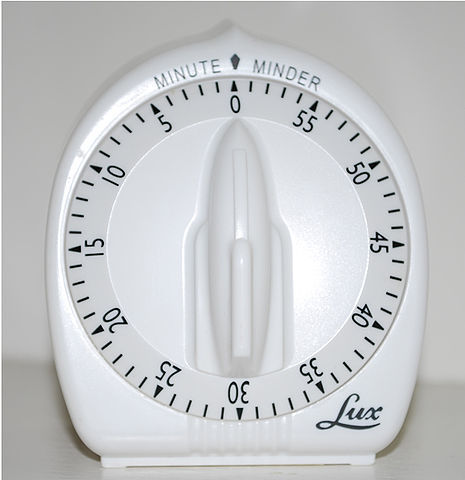
image via commons.wikimedia.org
There is a remarkably versatile tool that virtually everyone possesses and yet very few use to full advantage: a timer. When used appropriately, a timer can improve your work, play, health and happiness. For DaVincis — multi-talented, creative people — it can be especially effective in overcoming procrastination and distractions, in directing your talents so you get things done and in improving your life balance. Doesn’t matter if it’s an egg timer, your watch, your phone or your microwave. Anything you can set to alert you when a specific period of time has passed can be your new best friend.
Here are Five Ways a Timer Can Help You and Your Talents:
1. Overcome procrastination. (In other words: Help you Get Started).
The next time you find yourself procrastinating, set your timer for ten minutes. Commit to doing as much as possible during those ten minutes. Whatever you get done is enough.
Bonus #1: You will also avoid distractions. Somehow, when the timer is ticking, it helps foster focus.
Bonus #2: You will be surprised how much you can accomplished when you give yourself a ten minute time limit. There’s something about the time pressure that motivates you to you get things done.
Bonus #3: Odds are, when the timer goes off, you won’t want to stop. A body in motion stays in motion – sometimes we just need a little nudge to break out of our inertia.
2. Improving the quality of your work. (“Work” meaning whatever it is you’re doing – your job, your talents, your domestic chores or something else).
Want to get things done? Clear one hour and select the task you’d like to do. Commit to completing fifty focused, uninterrupted minutes on your task. Before you begin, take what steps are necessary to ensure you won’t be interrupted — for example, close the door, unplug the phone, disable your internet connection, etc. Now, set your timer for fifty minutes and begin.
If, while you’re working, you think of something critical that needs doing, write it down as a reminder so you can do it AFTER the fifty minutes has passed. When the timer goes, set it to ten minutes. During this period, do whatever would be a fitting reward — walk around the block, call a friend, check your email, snuggle your pet, stretch your body — whatever you like.
Using this method, you will find that your work is more focused and of higher quality.
Bonus #1: Built-in rewards for a job well done. This is highly motivating.
Bonus #2: Using this technique multiple times a day or week can increase your productivity tremendously.
3. Establish a new (helpful) habit.
Think about an action that would improve your life if you did more of it – especially on a daily basis. Something that you really, really want to do more. Something you know will be very beneficial to your well-being. For example, walking, exercising, writing, practicing an instrument, journalling, spending time with your kids, etc. Now think about your ideal goal: let’s use the example of walking at least 30 minutes a day, at least five days a week.
Now: think about an initial commitment that you can EASILY achieve. In our example, let’s say we’ll walk five minutes a day, at least three times a week.
What’s that you say? How can a five minute walk possibly make any difference to your life? It’s not the AMOUNT of the activity that’s important. What’s important is ESTABLISHING THE HABIT.
Now: honor your initial commitment. Using your timer to keep you honest, walk five minutes a day, at least three times this week. Keep track. You can walk more if you’d like. Doesn’t matter. What does matter is that you walk AT LEAST five minutes, at least three times during the week.
If you do walk at least five minutes at least three days a week, congratulations! You’re well on your way to establishing your new habit.
If you find, at the end of the week, that you didn’t keep your commitment, don’t beat yourself up. Simply ask: “Hmm, why didn’t I do this?” Either the new habit isn’t really something you’d like to establish and/or you’re experiencing [resistance that needs to be dealt with].
Once you are successful in establishing your initial commitment (let’s say a month of walking at least five minutes, at least three times a week), you can increase the amount of time per session. Note: better to take your time doing this, rather than trying to do too much, too fast which will lead to breaking your commitments, frustration and failure.
Here’s a sample schedule to establish a lifelong habit:
Month One: Walk at least 5 minutes at least 3 times a week.
Month Two: Walk at least 10 minutes at least 3 times a week.
Month Three: Walk at least 15 minutes at least 3 times a week.
Month Four: Walk at least 20 minutes at least 3 times a week.
Month Five: Walk at least 25 minutes at least 3 times a week.
Month Six: Walk at least 30 minutes at least 3 times a week.
Month Seven: Walk at least 30 minutes at least 4 times a week.
Month Eight: Walk at least 30 minutes at least 5 times a week.
4. Meditate.
Especially for those new to meditation or impatient with it, the timer is invaluable. According to Yougey Mingyur Rinphoche, it is best to meditate for short periods of time (like 2- 3 minutes) throughout the day.
Whenever you think about it – once an hour if you’d like – set your timer for two minutes, sit upright and clear your mind.
Many Bonuses: studies show that people who meditate – even beginners—are healthier, happier and less stressed than those who don’t.
5. Beat unhealthy cravings
If there’s something you are trying to do less of – snacking, surfing the internet, watching television, smoking, drinking alcohol, etc. – your timer can help. Let’s use the example of snacking.
First, generate a list of healthy things you’d rather do for fifteen minutes. In our case, let’s say, instead of snacking, we’d rather walk around the block, listen to some music, paint, knit, call a friend to chat, have a bath, cuddle your pet, read a good book or mediate.
Now, when the craving hits, set your timer for fifteen minutes and commit to not give into your craving for that period of time. Then, refer to your list and do the first thing that jumps out at you.
Example: I find myself wandering into the kitchen, seeking something/anything to munch. “Oh no!” I say. “This is a craving.” I deftly set my timer for 15 minutes and quickly refer to my List of Alternative Activities. “Around the block we go!”
Bonus #1: you will be doing more of what you prefer to do
Bonus #2: you are likely to find that, fifteen minutes later, not only has the craving passed, you’ve completely forgotten about it.
***
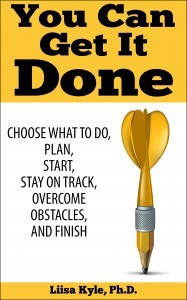 Want more tips and techniques on getting things done? Check out my book YOU CAN GET IT DONE: Choose What to do, Plan, Start, Stay on Track, Overcome Obstacles, and Finish
Want more tips and techniques on getting things done? Check out my book YOU CAN GET IT DONE: Choose What to do, Plan, Start, Stay on Track, Overcome Obstacles, and Finish
Available here for only $3.99: http://bit.ly/YouCanGetItDone
***
Want to re-publish this article? Go for it – just include the author’s name, a link to this original post and the following text blurb:
Are you struggling with too many talents, skills, ideas? You may have The DaVinci Dilemma ! Find tools, fun quizzes, coaching, inspiration and solutions for multi-talented people at http://www.davincidilemma.com/.
! Find tools, fun quizzes, coaching, inspiration and solutions for multi-talented people at http://www.davincidilemma.com/.

June 8, 2018
Anthony Bourdain – A Recipe for Blending Multiple Talents

image via commons.wikimedia.org
[Ed. Note: We are devastated at the tragic loss of Anthony Bourdain. We are re-publishing this piece, originally published 5/15/2011, to commemorate his multi-talented life. If you ever have thoughts of harming yourself, please tell someone. Get help. In USA, call 1-800-273-8255. In Canada, click here for crisis centres in every province.]
Anthony Bourdain is a chef who loves to write. When he was the executive chef at Les Halles in New York City, he started writing novels. That he was able to write and publish his first novel while simultaneously fulfilling the 24/7 responsibility of the head chef in a major restaurant speaks to just how important his writing is to him. His passion for both cooking and writing — and his dedication to both talents — is impressive indeed.
Bourdain’s blockbuster autobiography, Kitchen Confidential, revealed the nitty gritty of life in the food world and propelled him into a travel series on Food Network, A Cook’s Tour, the honing of a new talent (making entertaining television) as well as the creation of a companion book documenting his adventures. He subsequently moved to the Travel Channel where he writes and stars in No Reservations…and has published a chronicle of those adventures, too.
In addition to these best-sellers, Anthony Bourdain has written three novels, a cookbook and many food-related essays that have appeared in major magazines and newspapers as well as in a published collection (Nasty Bits).
His newest writing gig? As a television writer on HBO’s acclaimed series Treme. Here’s an interview in which he discusses his newest creative outlet.
Anthony Bourdain cooks well, writes well, makes entertaining television and has found a way to combine and enhance all those skills with each other.
*****
Activity: Use his example as inspiration. How could your talents work together? How could you combine your talents in interesting ways?
*****
Want to re-publish this article? Go for it – just include the author’s name, a link to this original post and the following text blurb:
Are you struggling with too many talents, skills, ideas? You may have The DaVinci Dilemma ! Find tools, fun quizzes, coaching, inspiration and solutions for multi-talented people at http://www.davincidilemma.com/ .
! Find tools, fun quizzes, coaching, inspiration and solutions for multi-talented people at http://www.davincidilemma.com/ .

June 3, 2018
Health Tips for DaVincis

image via freestockphotos.biz
How healthy are you? How well are you taking care of your body? For DaVincis — multi-talented, creative folks, it can be challenging to maintain a healthy lifestyle when you are juggling a dozen projects, a thousand ideas and the random demands of life. If you’re feeling pretty fit and well, that’s wonderful — keep it up! If, instead, you’re shortchanging your body, you owe it to yourself to improve your health. First, ask yourself why you’re giving your health short shrift. Be candid.
If you said, “I don’t have the energy.”
All the more reason to take better care of yourself. As you improve your health, you’ll have the energy to do a great deal.
If you said, “I don’t have time”:
Find the time. Here’s how. Besides, being healthy doesn’t have to take a great deal of time. Here are ten health tips:
Ten Simple, Easy, Quick Things You Can To Improve Your Health
1. Drink Water.
Humans are at least 60% water. Our brains are 70% water. Every bodily system requires water to function properly. The simplest, easiest thing you can to do improve your health is to add a glass of water to your mealtimes and break times.
Don’t like the taste of plain water? Try adding a splash of juice or a slice of cucumber or a sprig of mint. Herbal tea also counts as water — and there are dozens of flavors available. Try a few and find some you like.
2. Aim for 7 Hours of Sleep a Night
Research has shown that seven hours is the optimum amount of sleep for the human body. If you sleep more or less than seven hours, you’re not operating at your peak performance. To improve your health, shift towards the ideal of seven hours by increasing (or decreasing) your sleep time by 15 minutes this week, 15 minutes more next week and so on until you’ve gradually changed to a seven hour pattern.
3. Eat mindfully.
Rather than shoveling food in your gullet while you’re driving, working or watching television, make meal times a real break in the day. Sit down when you eat and do nothing else but focus on your meal. Slow down. Breathe. Put your fork down between mouthfuls.
4. Eat well.
You know if you’re eating junk or not. Your body needs protein, fiber, fruits and vegetables. The farther down the food chain, the better something is for you. Locally grown ingredients are more nutritious than items that have been trucked across the country.
You know if you’re overeating or not. Look at yourself. Are you pleased with your physique? If you’re overweight, studies have proven that there is only one effective way to change things: by eating less. Cut your portions by 10% and improve your health considerably.
5. Imbibe responsibly.
If you’re overdoing your libations, do your body and your brain a favor by cutting down.
6. Take a 5 Minute Stretch Break at least once a day.
Need some instruction? Here are some basic stretches to try.
7. Strengthen Your Body
Just eight minutes a day of simple strength exercises can have a huge impact on your health, including your bone density.
8. Move your body
If you’re not a gym-rat, look for fun, easy ways to get more active. Is there a dance or fitness class that appeals? Do you like hiking or biking or rollerblading? At a minimum, try walking around the block, at least once a day. Even better: get a pedometer and work your way up to 10,000 steps a day.
9. Schedule regular dental and medical check-ups.
You take your car in for regular oil changes, right? Your annual medical exam plus two dental appointments a year are basic maintenance for your carcass. By monitoring your health, you can quickly address any health issues that arise.
10. Reduce your stress.
Stress is a major cause of physical ailments. If you notice you’re feeling tense, take steps to reduce it. We’ll discuss specific stress-busters for DaVincis in a future post.
*****
Activity: Re-read the ten tips. Pick one and implement it this week.
*****
Check out my workbook: YOU CAN CHANGE YOUR LIFE: A Workbook to Become the Person You Want to Be. Available here: http://bit.ly/ChangeYourLifeWorkbook
*****
If you’d like to share or publish this article, you may, if you include the author’s name, a link to this original post and the following text blurb:
Are you struggling with too many talents, skills, ideas? You may have The DaVinci Dilemma ! Find tools, fun quizzes, coaching, inspiration and solutions for multi-talented people at http://www.davincidilemma.com/.
! Find tools, fun quizzes, coaching, inspiration and solutions for multi-talented people at http://www.davincidilemma.com/.

May 3, 2018
Financial Fears Part 2: Take Action
 Are your finances causing you worry, stress and strife? The first step to overcome money anxiety is to recognize and address the precise source of your financial fears. Once you know why money matters are affecting you the way they are, the next step is to address your financial situation. The best way to overcome fear is to take action. Here’s how:
Are your finances causing you worry, stress and strife? The first step to overcome money anxiety is to recognize and address the precise source of your financial fears. Once you know why money matters are affecting you the way they are, the next step is to address your financial situation. The best way to overcome fear is to take action. Here’s how:
1. Take stock.
What is your current financial situation? How much do you make in a month? How much do you spend? How much do you save? If you don’t know, it’s pretty much impossible to manage your finances effectively. If you haven’t already, clear a few hours to review and analyze your most recent financial statements. Look at your past few months’ bank statements, credit card bills and your regular recurring bills. Add up what you’re making, spending and saving.
2. Identify your financial goals.
What do you want to do with your money? Get out of debt? Save for something in particular? Create financial freedom? Sock away cash for retirement? Be very specific. What is most pressing? What is most important to you? If you have multiple financial goals, prioritize them.
3. Establish good financial habits.
(a) clear debt
If you are in debt, Job One is to get out of it.
Pay down your debts as fast as humanly possible. Until you do, you’re making other people rich — and delaying your own wealth while putting yourself under tremendous stress. You may have to live a frugal existence in the short term but it will be so worth it to get out of the red. You’ll be happier, healthier and will feel so darned proud of yourself.
Begin by reviewing your bills: where can you reduce your spending? Question any non-essential expenditures. (No, cable television is not required for your survival). Where are you leaking money? For one of my clients, it was her friends who insisted on going out to restaurants — and doing so far more frequently than she could afford. For another client it was the dollar store. Every week, she was spending $20 – $25 on stuff she really didn’t need but was buying because it was a ‘good deal’. She didn’t count it as an expense because each item was ‘only $1’. But her habit was costing her $100 a month…meaning $1200 a year.
Are you paying the minimum price for what you do need to buy? Do you comparison shop? Do you buy brand names or generic? (If you’re concerned about quality, check out unbiased sources like Consumer Reports. You may find that generic alternatives are superior to the marketed brand name). Do you use coupons? (Do you know who use coupons? Rich people. Studies have shown that coupon use is proportional to income). What expenses can you share with others?
But cutting expenses in only part of the battle against debt: How can you generate more income? How can you use your many talents to make more cash? What do you have that you can sell, barter or trade for things you need?
Note: while you are focused on paying down off debt, it’s important to treat yourself well. There are plenty of free and very low-cost activities to keep you entertained and feeling good about life. Check your local paper for listings of free events. Go for hikes with friends. Explore new neighborhoods. Visit museums and art galleries on their ‘free nights’. Utilize your public library.
It’s also helpful to monitor your progress as you pay down your debts. Keep track and celebrate every month than your debts shrink. Use techniques like these to keep yourself motivated over the long haul.
If you find yourself feeling down about your finances or throwing yourself a pity party, volunteer for folks who are less fortunate than you. A few hours at the local food bank or hospice will remind you to be grateful for whatever you’ve got.
(b) automate your savings
As you put your financial house in order, it’s important to establish the habit of regularly paying yourself. Set up automatic deposits to a savings account that you don’t spend. It doesn’t matter if you are contributing $1/week or $1000 per month — pick a number and a frequency that feels comfortable to you. Note: The key here is to hide this money so you do NOT spend it. Pretend the account doesn’t exist. Your goal here is to grow your finances, bit by bit over time.
(c) establish a ‘contingency’ fund
Things happen. Your car needs repair. Your kid needs braces. Your tuition gets hiked. You lose your job.
It’s important to prepare yourself from whatever unexpected ‘contingencies’ may arise. As you sort out your finances, create a new account for these unexpected expenses. Like the savings account mentioned above, the idea here is to make regular, automatic deposits into this account at a level that’s comfortable to you — $1, $10 or more a week — until you’ve eventually you’ve socked away enough money to cover your household’s expenses for four – six months.
Like your savings account, this is an account that should not be touched UNLESS necessary. This is not a source of money to dip into when you fancy a weekend in Vegas or a cute pair of boots. This is your household’s lifeline and safety raft. Mess with it at your peril.
(d) automate your bill payments
If you are not using AutoPay to pay your regular, recurring bills you are making more work for yourself while risking late or missed payments and their resulting fees and penalties. Even on your credit cards, you can arrange to automatically pay off the minimum or full amount each month.
(e) educate yourself about investments
To grow your money, you must learn about finances. Only you can determine what investments are right for your situation and preferred level of risk. The more you learn, the less you will fear your finances.
Avoid the temptation to let a random financial person make decisions for you. Sure, it’s easier to let someone else shuffle your money — and it’s foolish to do so. Commission-based financial consultants are looking out for their own financial interests, not yours.
Now there are certified financial planners — objective people whom you pay to manage your money. But they are expensive. If you have less than $1,000,000 to manage, it’s probably not worth their fees. (Here’s an article on that topic).
*****
Activity: Clear two uninterrupted hours. Review and analyze your most recent financial statements. Look at your past few months’ bank statements, credit card bills and your regular recurring bills. Add up what you’re making, spending and saving.
Activity: Based on your analysis of your recent finances, identify your key financial goal(s). If you have several, prioritize them.
Activity: Take your top financial goal. How will you reach it? What needs to happen?
*****
In the comments section below, we’d love to hear from you. How have you overcome your financial fears? What actions have helped the most?
*****
Want to re-publish this article? Go for it – just include the author’s name, a link to this original post and the following text blurb:
Are you struggling with too many talents, skills, ideas? You may have The DaVinci Dilemma ! Find tools, fun quizzes, coaching, inspiration and solutions for multi-talented people at http://www.davincidilemma.com/ .
! Find tools, fun quizzes, coaching, inspiration and solutions for multi-talented people at http://www.davincidilemma.com/ .

April 9, 2018
Financial Fears Part 1: Recognition

image via stock-free.org
Pop quiz: Right now, think about your finances. Now, what emotion(s) do you feel? If you feel happy and secure, congratulations — and please click on a different article because this one is not for you. If, however, you feel any flavor of fear — be it worry, anxiety or even full-fledged terror — then please keep reading. Financial fears are a common concern among DaVincis — i.e. multi-talented, creative people. Money anxiety can have a debilitating — if not devastating — effect on your well-being and your creativity. If you are a creative person, it’s vital to your talents to overcome your financial fears.
Why?
Left unchecked, financial fears can cause untold stress. It can manifest as negative psychological and physiological symptoms. It can strangle your happiness and creativity. Money anxiety can stop you from investing in your talents, from taking creative or entrepreneurial risks and/or from pursuing your true calling.
Note: Sometimes, other people’s financial fears can have the same effect: How many of us have wasted years in ‘practical’ professions so as to avoid the dire ‘starving artist’ situation our family, teachers, friends and/or society feared would be our fate? They may have meant well…but their money concerns can push you into unwanted directions. And the truth is that our family, teachers, friends and/or society cannot predict the actual consequences of any of our decisions. Accordingly, Step One for overcoming financial fears is to recognize and sidestep other people’s money anxiety.
Step Two is to understand your own.
There are different kinds of financial fears:
1. Fear of spending.
Are you a “saver”? There are many benefits to being frugal and fiscally conservative. The caution here is if your focus is on saving, saving, saving — on avoiding ANY expenditures…even those that are investments in your talents. If you have ample money in the bank yet you’re not investing in your talents — and/or you are denying yourself ‘frivolous’ treats (which probably means ANY treats), then your fear of spending is interfering with your creativity and well-being. If that sounds familiar, ask yourself: why am I not spending a portion of my money on my talents? Why am I not spending a portion of money on myself?
2. Fear of saving.
The flip side of being a “saver” is being a “spender”. You know who you are. You shop ’til you drop, max out your credit and otherwise live beyond your means. Again, the question to ask yourself is why? What are the consequences of your over spending? How does it affect your creativity, level of stress, relationships, etc.?
3. General financial anxiety.
For many people, it doesn’t matter how much money they have, spend or save — they’re chronically anxious about all things financial. If you detect a generalized, low-grade discomfort about your finances, try to pinpoint the source of your concern. What, exactly, are you afraid of?
4. Financial avoidance.
Then there are those who deal with financial matters by avoiding them. My husband is one of these. He simply doesn’t want to deal with anything fiscal. He hasn’t seen a bill, bank book or credit card statement in a decade. (Luckily, he has me to intervene). If you are a financial avoider — whether or not you have someone to deal with your finances on your behalf — your attitude towards money affects pretty much every area of your life. If you are avoiding money matters, odds are you are also avoiding financial opportunities…and ignoring potential fiscal problems. Avoid the former and you’re denying yourself financial rewards. Avoid the latter and you risk losing everything. If you are a financial avoider, ask yourself: what can you do to address your financial situation? Is there anything you can do to make money matters more palatable? Can you hire someone to handle them for you?
5. Fear of poverty. (Also known as the bag lady/ homeless person fear).
This is often a completely irrational (yet vivid) concern: the fear of ending up on the street with nothing. It seems to be rather prevalent among Type A folks, entrepreneurs and over-achievers…which is ironic because these people are the least likely to end up in dismal financial straights.
If you fear extreme poverty, do a reality check: Play out a few ‘worst case’ scenarios — what would happen if you lost your primary source(s) of income? What would you do? What options would be available to you? How likely is it, really, that you will lose everything and end up in the elements, pushing a shopping cart? When most of us stop and think honestly about it, we understand that our worst case scenario is very unlikely. Should our primary source(s) of income disappear, we would take action to find support elsewhere. The entrepreneurial among us may even thrive in such circumstances.
6. Fear of financial success.
Some people fear the inherent trappings of wealth: they’re afraid that if they become wealthy, other people will be jealous — or won’t like them. They’re afraid of the inevitable complications — like people coming out of the woodwork, asking for money. Or unscrupulous money managers. Or being in a higher tax bracket. Or the stress of choosing wise investments. If they have low opinions of wealthy people, then they may fear becoming one. They may be concerned that they will lose integrity or kindness.
What do you think about wealthy people? Are they kind and honorable? If your gut answer is ‘no’, then subconsciously you certainly wouldn’t want to become one…and you may well be sabotaging your finances unwittingly.
Here’s the key: your underlying beliefs about money affect the money you make. If you don’t think you’re worthy of wealth, you won’t be.
*****
An astute reader, such as yourself, will have noticed in these descriptions that within every financial fear lies something deeper. It might be feelings of inadequacy or of low self-worth. It could be deep-seated beliefs about wealth or the wealthy. Before you can put your finances in order, you need to identify what’s really going on. Once you identify the source of your thoughts about money, you can address them and take appropriate fiscal actions.
If you want to know what’s really, truly important to you, look at your calendar, your bank book and your financial statements. On what are you spending your time? On what are you spending your money? Really take a look at it. If you have ‘no money’ for your talents…but you’re spending hundreds of dollars on less important things, you are speaking through your wallet to say that your talents are not important….i.e. you are not important.
So let’s break this cycle by working through what’s really underlying your financial fears:
1. When you were growing up, what were the attitudes towards money in your home?
How was money talked about in your household? What finance-related phrases did you hear the most?
2. Think of an incident involving money or finances when you were young. What happened? What were the consequences?
3. Now, let’s shift to today. To what extent is your present attitude about money and finances similar to — or different from — that when you were growing up?
4. What words would you use to describe someone who is wealthy?
5. As you think about money and finances, how do you feel? Why?
***
Activity: This week, pay attention to your thoughts about money and finances. Make note of the emotions you experience, in regards to money and finances. (It’d be ideal if you actually write down your thoughts and experiences). Avoid judging yourself — be a neutral observer. You’re simply collecting data.
Activity: One week from today, review your answers above plus your observations from the week. What do you notice? What conclusions do you draw?
*****
Check out my workbook for proven, practical ways to understand yourself, accept yourself like yourself, respect yourself, be confident, enjoy yourself, and love yourself. Available here in paperback and ebook format: http://bit.ly/SelfWorthEssentials
*****
If you’d like to share or publish this article, you may, if you include the author’s name, a link to this original post and the following text blurb:
Are you struggling with too many talents, skills, ideas? You may have The DaVinci Dilemma ! Find tools, fun quizzes, coaching, inspiration and solutions for multi-talented people at http://www.davincidilemma.com/ .
! Find tools, fun quizzes, coaching, inspiration and solutions for multi-talented people at http://www.davincidilemma.com/ .

March 22, 2018
Making it Through the Messy Middle
 Do you have trouble sticking to things long enough to finish them? Or perhaps, your project is not turning out the way you hoped, so you abandon it?
Do you have trouble sticking to things long enough to finish them? Or perhaps, your project is not turning out the way you hoped, so you abandon it?
There’s this feeling of, “This sucks. Clearly I’m no good at this. I give up.”
That is the feeling — and the trap — of what I’ve dubbed the “messy middle.”
We all know the exhilaration of starting something new. Woo hoo! Everything is possible! A clean slate!
Sometimes (less often) we even manage to reach the triumph of completion.
But it’s that vast wasteland in between the exciting beginning and the satisfying finish where we tend to lose our way. It’s the second act of the screenplay, where you know how you want it to end but are floundering trying to get there. It’s the thrilling business idea that loses its thrill when you discover that people are not automatically lining up to buy what you’re selling, and you feel like a failure.
For me, my most recent “messy middle” experience happened in oil painting class.
Now this is an activity I planned as a creative play date for myself. I figured, a once-a-week block of time in the studio would be a super-relaxing treat.
Except this time, it was not. There’s no frustration quite like working on a painting for hours and realizing it looks like a pile of mud. I looked around at the other students’s work. We were all painting the same coastal landscape. Mine was decidedly less attractive.
My first impulse was to simply give up and start another painting. What was the point of continuing, when it looked so awful? But, I reasoned, a feature of oil painting is that it lets you keep on adding and changing things. And I was at least enjoying mixing the colors and being with the class. I could call this picture a failure, but why not just keep experimenting and see what happened?
So I did… and a small miracle happened. I had fun. I tried brushes and colors I wouldn’t have if I were attempting to be perfect. I relaxed and breathed.
And the painting? It eventually turned out to be one of my best. The whole class and the instructor loved it.
 For me the biggest triumph was facing the messy middle of the process, and not quitting.
For me the biggest triumph was facing the messy middle of the process, and not quitting.
When I thought about it, I realized everything in life has a messy middle. It’s after the honeymoon when you get down to the reality of being married. It’s the agony of working on your golf swing over and over when it seems like someone legally blind could hit the ball straighter than you. It’s the novel, the thesis, the symphony, the invention that at some point in the process looks like total crap. It’s the soup in the cocoon before it emerges as a butterfly.
So, how do you get through your messy middle and get to reap the reward?
Here are a few tips:
Recognize it’s NOT YOU. It’s just the nature of the process. Everything has a messy middle stage. Too often, creative people assume it’s our own lack of talent or skill that’s causing a project to look so awful halfway through. That’s why we give up — it seems futile, and why punish ourselves with repeated reminders of how much we suck?
Treat everything like an experiment. Trick yourself into a state of curiosity rather than judgment. “I wonder what would happen if the hero took up skateboarding?” “I wonder how orange would look here instead of blue?” “Why don’t I try making this offer and see how it goes?” BONUS: besides keeping you in action while reducing stress, this approach also yields more creative thinking.
See yourself as a warrior. In his excellent book The War of Art , Steven Pressfield pictures Resistance as a monster that a creative person needs to do battle with every day. The Messy Middle is one of Resistance’s tactics to get you to give up. Don’t let him win! Kick him in the nuts instead.
Reward yourself for taking action, not for the result. You get the most points for doing what you can do to keep going through the Messy Middle. How it turns out is often not 100% your control and it’s almost beside the point. Obviously, we all prefer mad success, but even when you succeed, you discover that your proudest victory is the one you win over yourself. Plus, you’ll almost certainly get something out of the process regardless of the outcome. One of my friends, who doesn’t believe in failure, likes to say, “I win, or I learn.”
If we can’t avoid the Messy Middle, why not embrace it, or at least expect it? As poet Robert Frost once said, “The best way out is always through.” (I’ll bet he travelled a few roads with messy middles.)
***
Next time you feel like giving up halfway through, keep going just for the heck of it, and watch what happens. Have you ever done this? What happened? Share in the comments!
***
If you’d like to share or publish this article, you may, if you include the author’s name, a link to this original post and the following text blurb: Are you struggling with too many talents, skills, ideas? You may have The DaVinci Dilemma™! Find tools, fun quizzes, coaching, inspiration and solutions for multi-talented people at http://www.davincidilemma.com/.

March 11, 2018
The Problem with “Purpose”: You Have More Than One
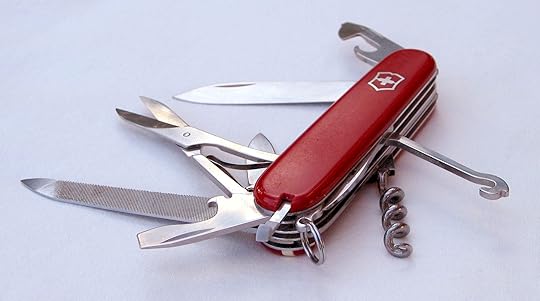
image via commons.wikimedia.org
The prevailing wisdom is that to be happy, fulfilled and successful, one must discover and pursue one’s “purpose” in life. There are no shortage of self-help books and programs designed to do just that. The problem, however, is that this is utter bunk. Especially for DaVincis — multi-talented, creative people like you. You have more than one life purpose. Frankly, everyone has more than one purpose on this planet: We serve different purposes at different ages. We serve different purposes through our different talents.
I don’t know who started the myth and frankly I hope I never figure that out because they’ve caused untold unnecessary pain in creative people. (If you can’t tell, this is a pet peeve of mine. When my coaching clients confess they’ve been gnashing their teeth and rending their garments, trying to figure out what their sole life purpose is, it’s difficult for me to remain calm).
So today, let’s stop the abuse and debunk the lie you’ve been told. Repeat after me: “I have more than one purpose or passion. I’m on this planet to do many, many things. Many activities give me pleasure and meaning.”
Recognizing there is more than one purpose to any life, let’s investigate yours.
Activity: Clear an uninterrupted hour for some deep reflection.
1. List the other major events of your life so far. (For example, phases, key relationships, jobs, moves, etc). Delineate the major chapters of your life in a way that makes sense for you. (For example, I think of my ‘Childhood’, ‘High School Chapter’, ‘University Years’, my ‘European Chapter’, ‘Graduate School, my ‘Vancouver Chapter’, my ‘Government Chapter’, my ‘Corporate America Chapter’, my ‘Creative Life Blast Off’, my ‘Hollywood Chapter’ and so forth).
2. For each life segment that’s significant for you, answer the following questions:
What were your purpose(s) in life then?
What were your natural affinities?
What gave your life both pleasure and meaning?
3. What are your purpose(s) in life right now? What are your natural affinities today? What gives your life pleasure and meaning these days?
4. Imagine yourself in the future. What life purpose(s) would you like to pursue in the future?
5. Now take a deeper view. What are the primary purposes of all humans? (For example, to survive, to thrive, to connect with other humans, etc.) How does this manifest in you?
6. Review your answers thus far. Is there anything you are not doing at this time in your life that you would like to do? How could you incorporate this in your present life?
7. Select the life purposes you’d like to pursue right now. Write them down. Capture them in a way that’s meaningful for you — for example in a painting, sculpture, collage, meditation shrine and/or business plan.
*****
This activity is designed to foster an appreciation for all the things you do. You have many more than one purpose. I encourage you to pursue as many purposes as you’d like.
***
 Want more tips and techniques on getting things done? Check out my book YOU CAN GET IT DONE: Choose What to do, Plan, Start, Stay on Track, Overcome Obstacles, and Finish. Available here in paperback and e-book format: http://bit.ly/YouCanGetItDone
Want more tips and techniques on getting things done? Check out my book YOU CAN GET IT DONE: Choose What to do, Plan, Start, Stay on Track, Overcome Obstacles, and Finish. Available here in paperback and e-book format: http://bit.ly/YouCanGetItDone
***
If you’d like to share or publish this article, you may, if you include the author’s name, a link to this original post and the following text blurb: Are you struggling with too many talents, skills, ideas? You may have The DaVinci Dilemma™! Find tools, fun quizzes, coaching, inspiration and solutions for multi-talented people at http://www.davincidilemma.com/.


